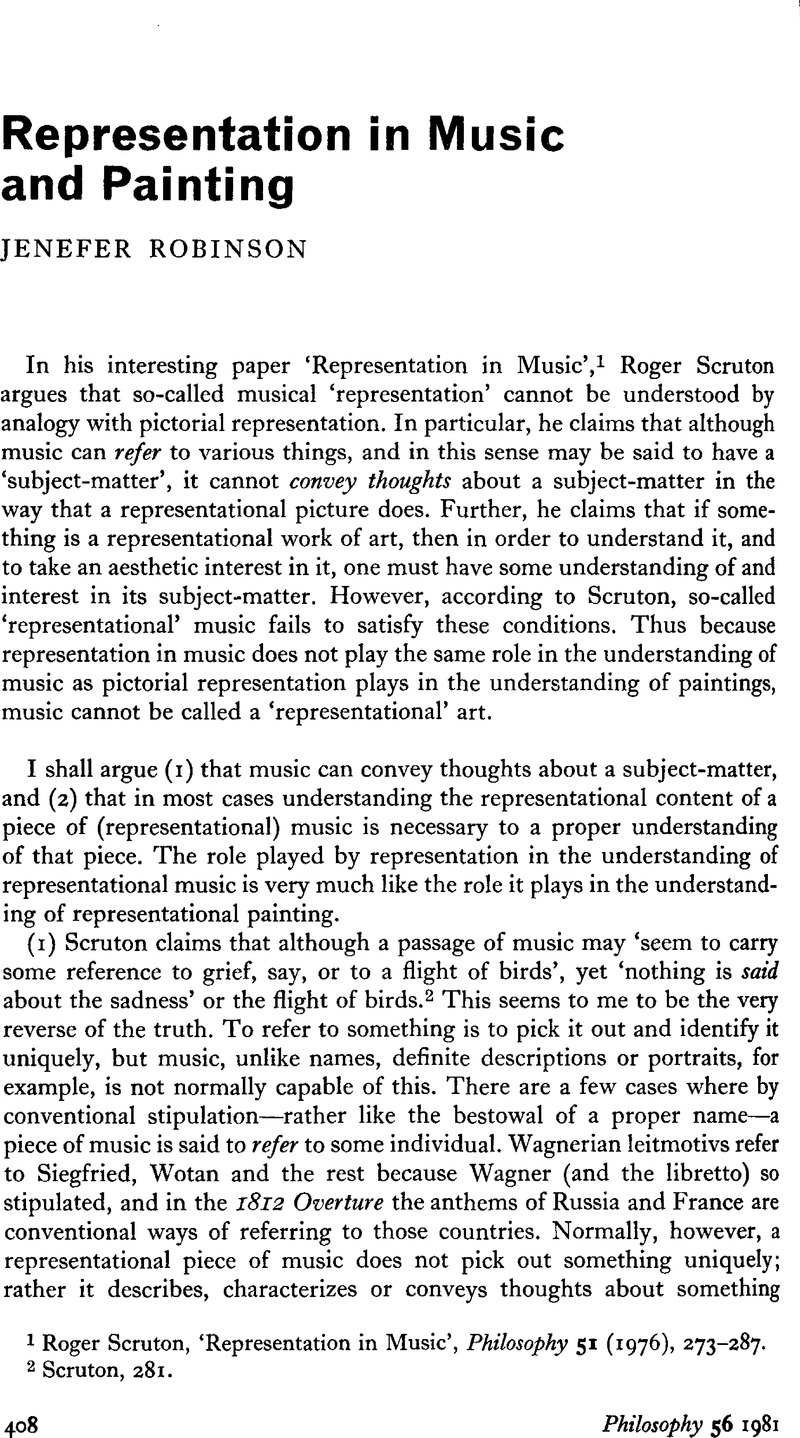No CrossRef data available.
Article contents
Representation in Music and Painting
Published online by Cambridge University Press: 30 January 2009
Abstract

- Type
- Discussion
- Information
- Copyright
- Copyright © The Royal Institute of Philosophy 1981
References
1 Scruton, Roger, ‘Representation in Music’, Philosophy 51 (1976), 273–287CrossRefGoogle Scholar.
2 Scruton, 281.
3 Scruton, 276.
4 Scruton, 285.
5 Walsh, Stephen, The Lieder of Schumann (Cassell, 1971), 44Google Scholar.
6 Scruton, 282.
7 Scruton's paper has recently been criticized by Richard Kuhns, but I find Kuhns' objections entirely unconvincing. Most of his criticisms rely on the claim that music is a representational art in virtue of the fact that sections of a piece of music refer to other sections. For example, the first statement of a theme in a symphony refers to the second statement of that theme. Such a view makes nonsense of the distinction between representational and non-representational art. If we accept this condition on ‘representational art’—and there is every reason to suppose that Scruton would not accept it—then any well-organized work of art will count as ‘representational’. Any abstract painting, for example, will contain parts that ‘refer’ to other parts in this loose and misleading sense of ‘refers’. More specifically, Kuhns claims that in order to understand a ‘crab canon’, one must be able to hear the ‘self-reference’ in the music. But Scruton would not deny that one must be able to hear how the music is organized. However, he might well disagree that one has to hear it as representing a crab, as Kuhns seems to assume. See Kuhns, Richard, ‘Music as a Representational Art’, British Journal of Aesthetics 18 (1978), 120–125CrossRefGoogle Scholar.


